When it comes to grooming small pets, training plays a crucial role in ensuring a stress-free experience. Whether you have a dog, cat, rabbit, or guinea pig, getting them comfortable with grooming sessions is essential for their well-being and overall health. In this article, I will share some tips and techniques to help you train your small pet for grooming sessions, making it a positive and enjoyable experience for both of you.
Grooming your small pet can involve tasks such as brushing their fur, clipping their nails, or cleaning their ears. While these activities may seem simple, they can initially be unfamiliar and even stressful for your pet. But with proper training and a patient approach, you can help them overcome any apprehensions and make grooming a breeze.
Key Takeaways:
- Training your small pet for grooming sessions is essential for their comfort and well-being.
- Start by desensitizing your pet to grooming tools and procedures, rewarding positive behavior along the way.
- Create a calm and comfortable grooming area, choosing a quiet location where you and your pet can focus without distractions.
- Teach your pet to relax on the grooming table using treats and positive reinforcement techniques.
- Use gentle handling, the right grooming tools, and gradual introduction to grooming procedures to build a positive association with grooming.
Creating a Comfortable Grooming Area
To train your small pet for grooming sessions, it is important to create a comfortable grooming area. This includes choosing a quiet and secure location for grooming, such as a dedicated grooming room or a quiet corner of your home where you and your pet will not be distracted.
One essential element of a comfortable grooming area is a grooming table. A grooming table provides a stable and elevated surface for your pet and allows you to have better access to them during the grooming process.
To make the grooming table comfortable for your pet, consider adding a towel, blanket, or even a cozy bed for them to sit or lie on. This will help create a soft and inviting surface that your pet will feel at ease on. You can also provide a pillow for your pet’s head, allowing them to rest comfortably while you groom them.
In addition to the grooming table, make sure to organize your grooming tools in a way that is easily accessible. Having everything you need within reach will help streamline the grooming process and reduce stress for both you and your pet.
By creating a comfortable grooming area, you are setting the stage for a positive grooming experience for your small pet. This environment will help them feel secure and relaxed, making the grooming sessions more enjoyable for everyone involved.
Teaching Your Pet to Relax on the Grooming Table
One of the key aspects of training your small pet for grooming sessions is teaching them to relax on the grooming table. This step is crucial to ensure a stress-free and enjoyable grooming experience for both you and your pet.
To begin teaching your pet to relax on the grooming table, you can use positive reinforcement techniques. Start by luring them onto the table with their favorite treats. Once they are comfortably on the table, reward them with treats and gentle petting to help them associate the table with positive experiences and relaxation.
Consistency is key in this training process, so it’s important to practice these sessions daily. Over time, you can gradually introduce grooming activities while rewarding your pet for staying calm and relaxed on the table. This will help them become accustomed to the grooming process and build their confidence.
Remember to keep the training sessions short and enjoyable. Always use positive reinforcement, such as treats and praise, to reward your pet for their cooperation. Offering treats and using gentle strokes while they are on the table can also help them relax and feel at ease during the grooming session.
By teaching your pet to relax on the grooming table using positive reinforcement and treats, you can create a positive association with grooming and make it a pleasant experience for your furry friend.
To illustrate the effectiveness of this training method, take a look at the example table below:
| Grooming Activity | Training Method |
|---|---|
| Brushing | Start by luring your pet onto the grooming table with treats. Once they are on the table, reward them with treats and gentle strokes while brushing their fur. Gradually increase the duration of the brushing session while keeping your pet relaxed and engaged with positive reinforcement. |
| Nail Trimming | Introduce your pet to the grooming table and reward them with treats and praise. Gradually desensitize them to the sound and sensation of the nail clippers by touching their paws with the clippers without actually trimming their nails. Reward your pet for staying calm and relaxed during this process. Once they are comfortable, you can begin trimming their nails while rewarding them for their cooperation. |
| Bathing | Start by allowing your pet to explore and sniff the grooming table while offering treats and praise. Gradually introduce them to the sensation of water by using a spray bottle or sponge to wet their fur lightly. Reward them for staying calm and relaxed during the bathing process. Over time, increase the amount of water and the duration of the bathing session while they remain relaxed and cooperative. |
Practice patience and consistency during the training process, as every pet learns at their own pace. With time and positive reinforcement, your small pet will be able to relax on the grooming table and have a stress-free grooming experience.
Grooming Tools and Techniques
When it comes to training your small pet for grooming sessions, using the right grooming tools and techniques is absolutely essential. By employing gentle handling and creating positive associations, you can help your pet feel comfortable and relaxed during the grooming process. Here are some key considerations to keep in mind:
Gentle Handling
It is crucial to handle your pet gently during grooming sessions. Avoid any rough handling or pulling on their coat, as this can cause them stress and discomfort. Instead, approach grooming with a calm and patient demeanor, using gentle strokes and movements.
Choosing the Right Tools
Start by selecting grooming tools that are appropriate for your small pet’s needs. If your pet is sensitive or anxious, opt for soft and non-invasive grooming tools. For example, a soft-bristled brush or a rubber grooming mitt can be great choices for dogs or cats with delicate skin. The goal is to find tools that will not cause any harm or discomfort to your pet.
To determine the best grooming tools for your small pet, consider their coat type and specific grooming needs. For example, long-haired dogs may require a de-shedding tool, while short-haired pets may benefit from a grooming glove. Research and consult with grooming experts or professionals to identify the most suitable grooming tools for your pet.
Reinforcing Positive Behavior
During your grooming sessions, it’s important to reinforce positive behavior and create positive associations for your pet. Use treats as rewards to encourage good behavior and cooperation. For example, offer your pet a treat when they stay calm and still during the grooming process. This positive reinforcement will help your pet associate grooming with pleasant experiences, making future sessions easier and more enjoyable for both of you.
In addition to treats, provide gentle petting and praise during grooming sessions. This physical contact and positive attention can help your pet feel loved and reassured, further strengthening the positive associations with grooming.
“Using gentle handling and positive reinforcement during grooming sessions can help your pet feel safe and secure, ensuring a stress-free experience.”
Grooming should be a bonding experience between you and your small pet. By employing gentle handling techniques, choosing the right grooming tools, and reinforcing positive behavior, you can create a positive and comfortable atmosphere for your pet. Remember to remain patient and understanding, allowing your pet to adjust to the grooming process at their own pace.
Next, let’s explore the gradual introduction of grooming procedures to ensure a stress-free grooming experience for your small pet.
Gradual Introduction to Grooming Procedures
To ensure a stress-free grooming experience for your small pet, it is important to gradually introduce them to different grooming procedures. By gradually acclimating them to the grooming process, you can help them feel more comfortable and relaxed during each session.
Start with shorter grooming sessions to allow your pet to become familiar with the grooming environment and the grooming tools used. This will help them develop a sense of trust and ease with the process. As they become more comfortable, gradually increase the duration of the grooming sessions.
If your pet is fearful or anxious about a specific grooming activity, such as clipping their nails or bathing, it is essential to introduce it in a safe and comfortable space. Consider starting with these activities on your lap or on a cozy couch. This will create a positive association with the grooming procedure and help your pet feel more at ease.
During the grooming sessions, make sure to provide plenty of treats and frequent breaks. This will help your pet associate the grooming procedures with positive experiences and rewards. Offering treats throughout the process will reinforce their good behavior and help them relax.
Remember that patience and consistency are key when desensitizing your pet to grooming procedures. It may take time for them to fully accept and relax during these activities. Continue to provide positive reinforcement and reassurance, and never force them into uncomfortable situations.
By gradually introducing grooming procedures, you can help your small pet develop a positive association with grooming and make it a more enjoyable experience for both of you.
| Grooming Procedure | Steps |
|---|---|
| Nail Clipping |
|
| Bathing |
|
Building a Positive Association with Grooming
When it comes to grooming your small pet, building a positive association is key to ensuring a stress-free experience. By incorporating high-value treats and gentle techniques, you can create a pleasant environment that your pet will enjoy. Let’s explore some effective methods for fostering a positive grooming experience.
Using Treats as Rewards
During grooming sessions, rewarding your pet with treats is an excellent way to reinforce good behavior and create a positive association. Choose high-value treats that your pet finds irresistible, such as their favorite snack or a small piece of cooked meat. Whenever your pet exhibits calm and cooperative behavior during grooming, offer them a treat as a reward. This positive reinforcement will help your pet associate grooming with something enjoyable and rewarding.
Petting and Massaging Your Pet
In addition to treats, another effective technique for building a positive association with grooming is through gentle petting and massaging. As you groom your pet, take breaks to give them affectionate strokes and soothing massages. This tactile stimulation can help relax your pet and create a pleasant sensation during grooming. By pairing grooming activities with these pleasurable sensations, your pet will gradually learn to associate grooming with a sense of comfort and relaxation.
Gradual Increase in Duration
When training your small pet for grooming, it’s important to be patient and gradually increase the duration of grooming sessions. Start with short sessions and slowly extend the time as your pet becomes more comfortable and cooperative. By taking a gradual approach, you give your pet the opportunity to acclimate to the grooming process at their own pace. This helps prevent overwhelming them and maintain a positive experience throughout the entire session.
Creating a Relaxing Environment
To further enhance the positive association with grooming, create a relaxing environment for your pet. Choose a quiet and well-lit space where your pet feels secure and comfortable. If possible, play soft music or use calming pheromone sprays to promote a sense of tranquility. Additionally, consider using a grooming table or mat that is soft and cushioned, providing your pet with a cozy spot to sit or lie on during the grooming process. All of these elements contribute to creating a grooming area that your pet will positively associate with relaxation and comfort.
By incorporating treats, gentle techniques, gradual increases in duration, and a relaxing environment, you can build a positive association with grooming for your small pet. Remember to always keep the sessions short and enjoyable, ensuring that your pet has a pleasant grooming experience that strengthens your bond and contributes to their overall well-being.
Conclusion
Training your small pet for grooming sessions is essential to ensure a stress-free grooming experience for both you and your furry friend. By following a few simple steps, you can make grooming a positive and enjoyable bonding time for your small pet.
Start by creating a comfortable and inviting grooming area, choosing a quiet location where you and your pet can focus. A grooming table with soft bedding can help your pet relax and feel secure during the grooming process.
Teach your pet to relax on the grooming table by providing treats and positive reinforcement. Gradually introduce grooming activities and always use gentle handling and the right grooming tools. This will help your pet associate grooming with positive experiences and reduce any anxiety or fear.
Remember that patience and consistency are key. With time and practice, your pet will become comfortable and even enjoy the grooming sessions. By building a positive association with grooming and providing a stress-free environment, you can ensure that your small pet remains happy, healthy, and looking their best.
FAQ
How can I train my small pet for grooming sessions?
To train your small pet for grooming sessions, start by creating a comfortable grooming area and choosing a quiet location. Teach your pet to relax on the grooming table using treats and positive reinforcement. Use gentle grooming tools and techniques, gradually introducing them to different procedures. Build a positive association with grooming by using treats and gentle handling.
How can I create a comfortable grooming area for my small pet?
Creating a comfortable grooming area for your small pet involves choosing a quiet and secure location, such as a distraction-free room. Make the grooming table comfortable by adding a towel, blanket, or bed. You can also provide a pillow for your pet’s head to help them relax during grooming sessions.
How can I teach my small pet to relax on the grooming table?
To teach your small pet to relax on the grooming table, start by luring them to lie down using food treats. Once they are down, reward them with treats and petting to help them relax. Gradually introduce grooming activities while rewarding them for staying calm and relaxed on the table. Practice these sessions daily to help your pet become comfortable with grooming.
What grooming tools and techniques should I use for my small pet?
When grooming your small pet, it is important to be gentle and avoid rough handling or pulling on their coat. Start with soft and non-invasive grooming tools, especially if your pet is sensitive or anxious. Use positive reinforcement, such as treats and petting, during grooming sessions to reinforce good behavior. The aim is to build positive associations with grooming, making it a pleasant and bonding experience for your pet.
How should I introduce my small pet to grooming procedures?
To introduce your small pet to grooming procedures, start with shorter sessions and gradually increase the duration as they become more comfortable. If your pet is fearful of a specific grooming activity, start by introducing it in a comfortable place like your lap or on the couch. Use treats and frequent breaks to help your pet accept and relax during these procedures.
How can I build a positive association with grooming for my small pet?
Building a positive association with grooming is crucial. Use high-value treats to reward your pet during grooming sessions, reinforcing good behavior and creating a positive experience. Pet and massage your pet during grooming to help them relax and associate grooming with pleasant sensations. Take your time and be patient, gradually increasing the duration of grooming sessions as your pet becomes more comfortable. Keep the sessions short and enjoyable for your pet.

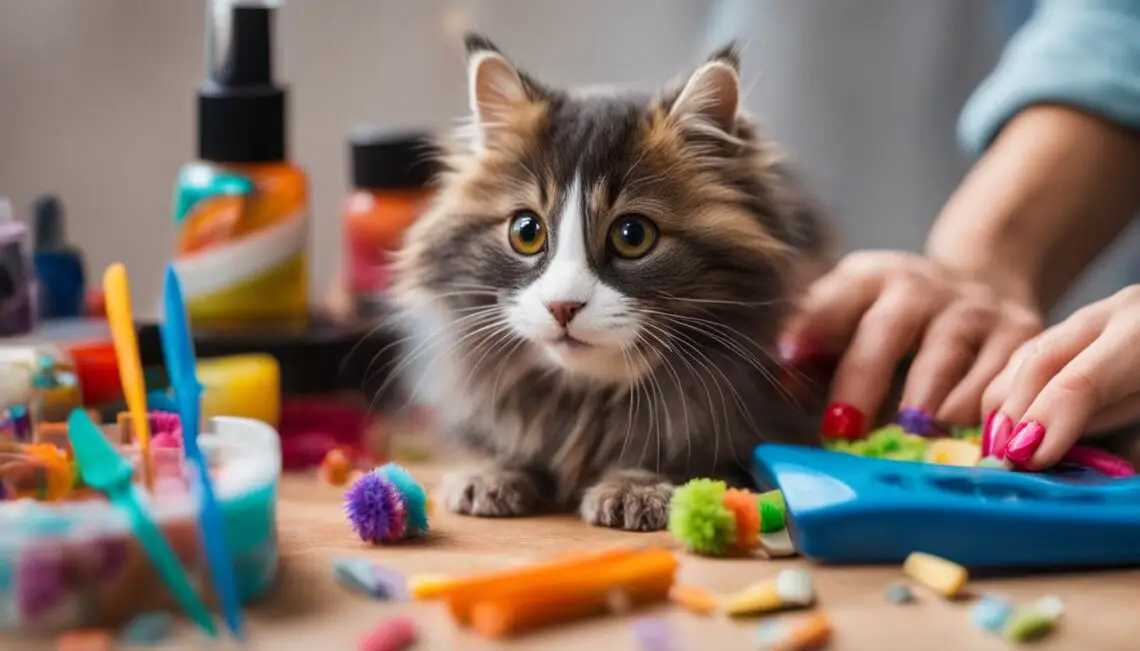
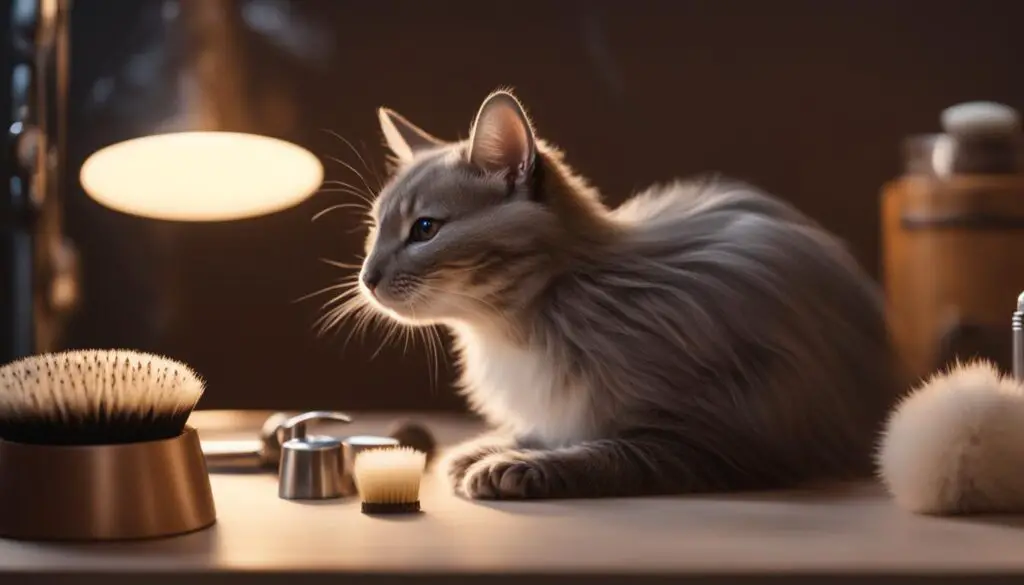
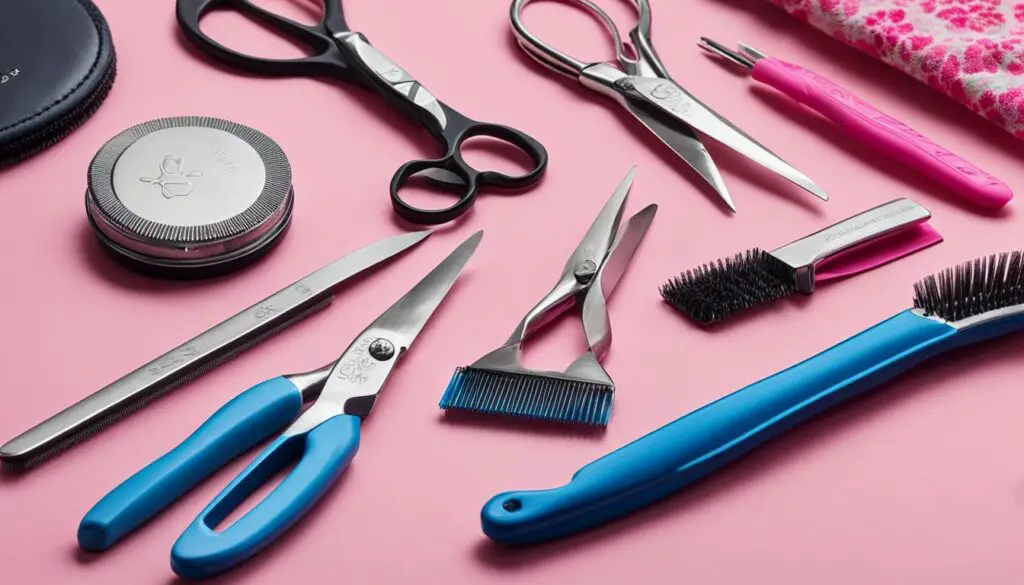
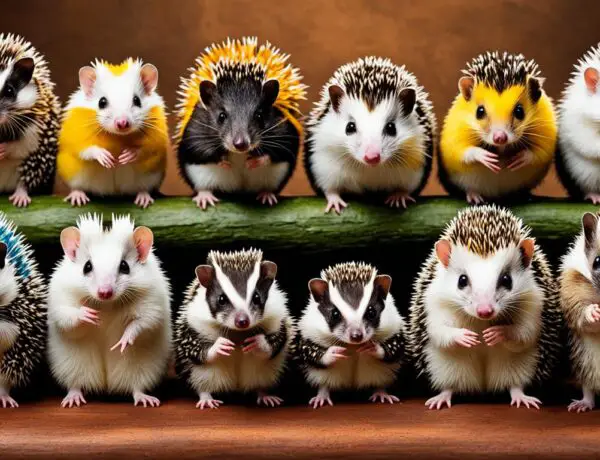
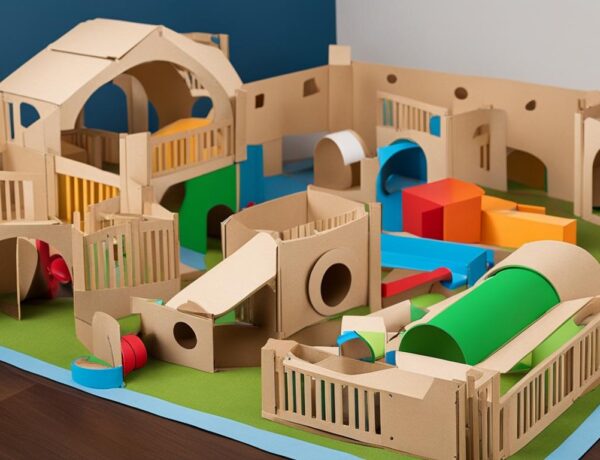

No Comments